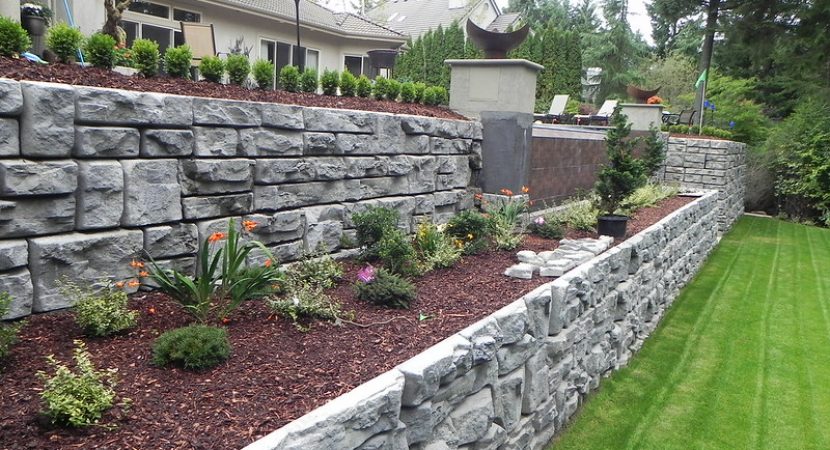Last Updated on
Retaining walls have been in use for centuries, and for good reason. These versatile structures can organize landscapes, protect slopes and beautify outdoor living spaces. Here are a few of the benefits of building a retaining wall on your property.
Aid Drainage to Prevent Floods
An important benefit of building a retaining wall is the added flood control it offers. Retaining walls promote the drainage of water through integrated drainage pipes so that moisture doesn’t build up behind the wall and damage the landscape—or the wall itself. A well-built retaining wall is tailored to the right height and length and is comprised of appropriate materials. The wall should be able to support the weight of the soil behind it, as well as the weight of the landscaping stones or concrete units from which it is made. It is important to invest in high-quality materials and hire a reputable design/build company for its construction.
Prevent Erosion
The combination of heavy rain and strong wind can be unkind to a sloped landscape. Soil becomes saturated with water, and as the water runs off the slope, it can carry the soil with it. The erosion of a slope can be prevented with the construction of retaining walls because a wall can slow the flow of water down the slope, and stand in the way of any moving soil to keep it in place. The added drainage offered by a retaining wall prevents the backlog of water on the slope, discouraging any soil from becoming overly saturated and dislodged. Covering a slope with plenty of plants can also prevent erosion because their roots can also help to keep soil in place.
Create Functional Levels
Many homeowners do not realize how much more functional space can be created by leveling out a hilly landscape or constructing a retaining wall to improve the drainage of a waterlogged area. While it’s difficult to install anything on a slope, a leveled out platform held back by a sturdy retaining wall can house a small furniture arrangement or decorative sculpture—depending on how large a platform you want to create. By using a retaining wall to improve the drainage of an area, you could have newly formed space for a patio, playground or vegetable garden without worrying about water damage.
Add Aesthetic Interest
Retaining walls can be built from natural stone or concrete blocks and can even be veneered to achieve the best of both worlds. With the range of shades found in natural stone and the diversity in which concrete wall units are manufactured, no two walls on your property need to look the same. Utilizing stunning stones, eye-catching accents or an interesting pattern for the stacking of your wall units, you can transform functional retaining walls into visual focal points. Add to a retaining wall’s appearance by fitting it with sleek strip lighting or periodically positioned accent lights.
Access Built-In Seating
Retaining walls make excellent seat walls in a pinch. If a retaining wall is positioned where it is likely to be used as a casual seat, opt for smooth, comfortable coping that won’t damage delicate clothing. You can even scatter comfortable cushions along the wall to add a pop of color to the design and invite guests to make use of the additional seating space.


Reply